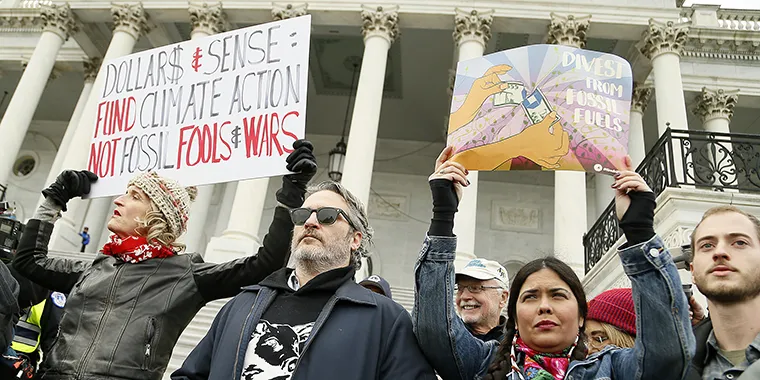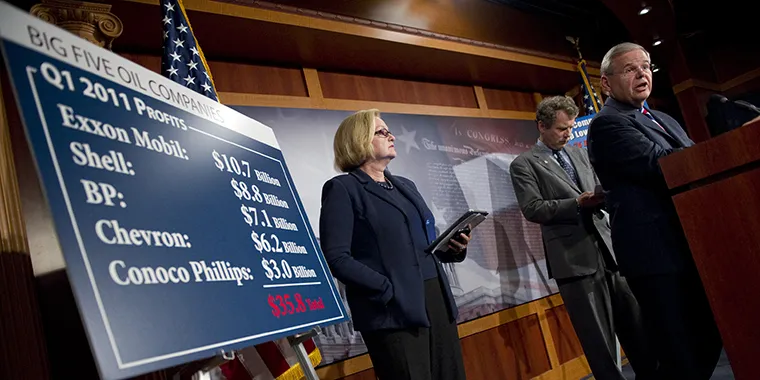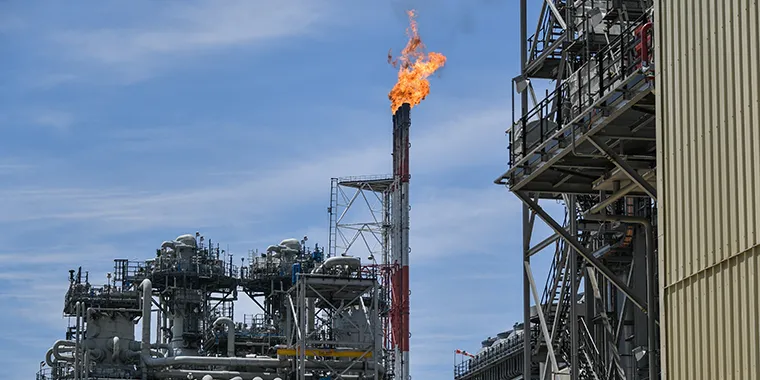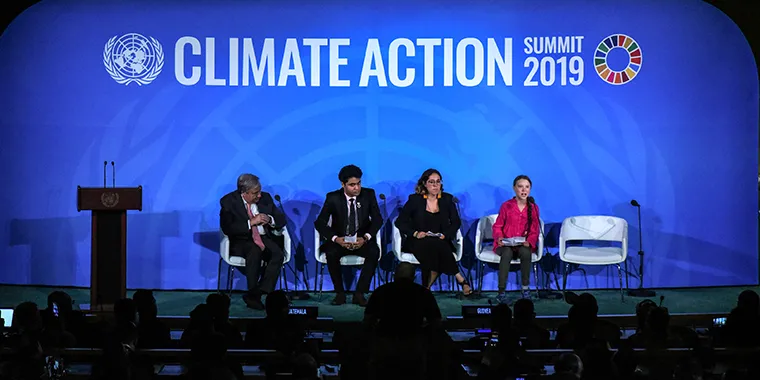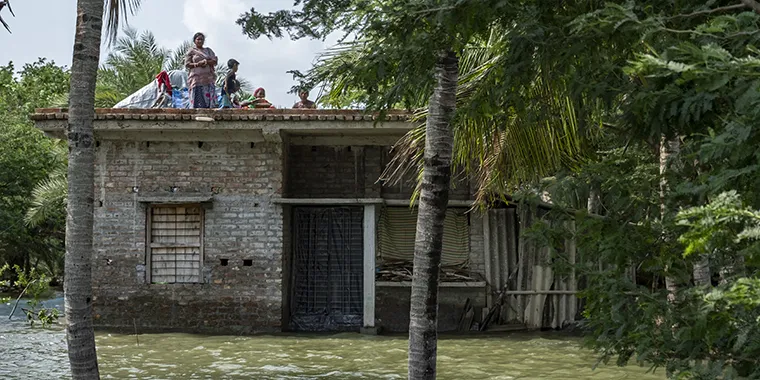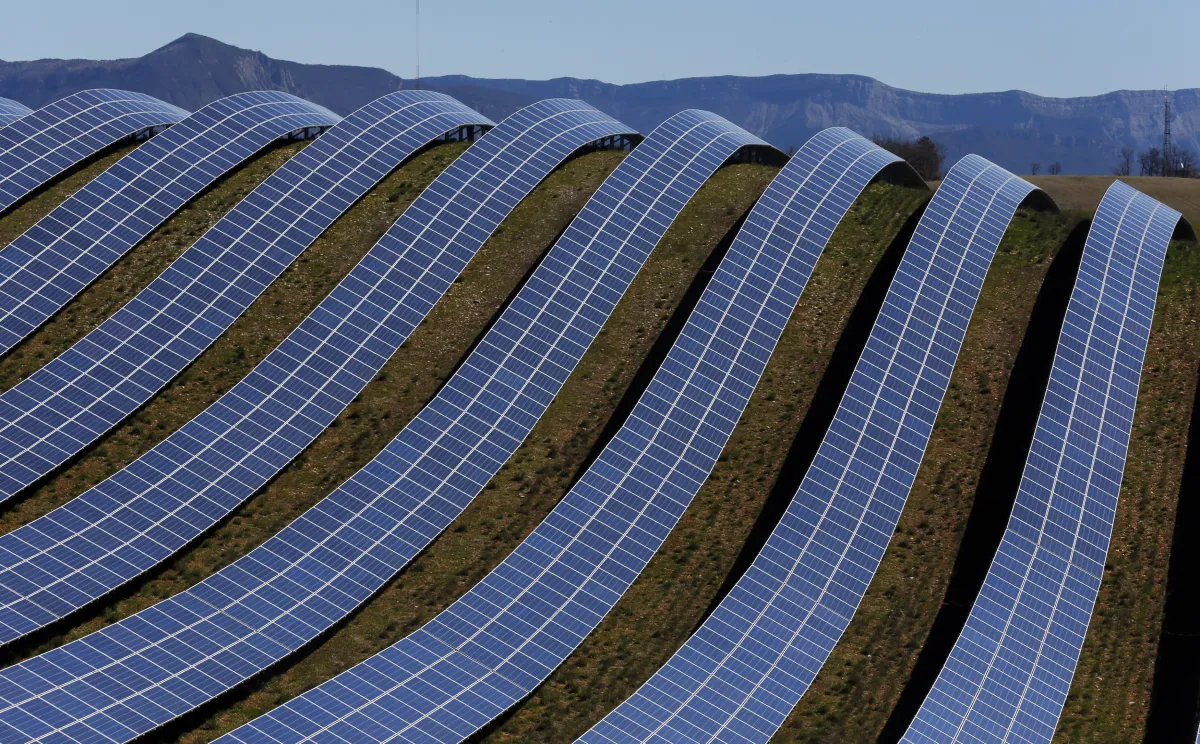How Do Governments Combat Climate Change?
In this free resource, explore seven ways countries are responding to a changing environment, from cap and trade policies to clean energy standards.
Have you ever brought a reusable tote bag to the grocery store? Or refilled a water bottle rather than buying a disposable one? Do you separate your recycling from your trash?
If you answered yes to any of those questions, you’re not alone. In the United States, more than half of all adults claim to have taken some action to protect the environment. But will individual actions be enough to address the massive, transnational challenge of climate change? Unfortunately, no.
Almost all experts agree that governments—not just individuals or private businesses—play a critical role in the fight against climate change. However, they disagree on the most effective options to address the problem. This resource outlines seven policies aimed at combating climate change and explores their potential upsides and downsides for society.
Carbon taxes
Greenhouse gas emissions, such as carbon dioxide, pollute the atmosphere and change the climate. Carbon taxes attempt to minimize those emissions by requiring the largest greenhouse gas producers—for instance, coal-fired power plants—to pay for the damage they cause. By attaching fees to emissions, carbon taxes encourage people, businesses, and governments to emit less.
Governments can use the revenue generated from these fees to pay for social programs, invest in clean energy, or lower taxes for the public. However, some experts believe carbon taxes cause economic strain for people in lower income brackets. For example, if electric companies respond to carbon taxes by raising prices, the increase can disproportionately affect low-income households, which on average spend greater percentages of their earnings on utilities than wealthier households do.
Where it worked: Since becoming one of the first countries to implement a national carbon tax in 1991, Sweden has successfully lowered its greenhouse gas emissions by 27 percent. And although critics believed the tax would stunt the economy, Sweden’s gross domestic product has since doubled. Today, more than thirty countries have implemented a national carbon tax, including Argentina, Canada, Japan, Singapore, and Ukraine.
Cap and trade
The term cap and trade refers to a government program designed to limit (or cap) private-sector greenhouse gas emissions. In cap and trade systems, governments allocate or sell a set number of permits, each of which represents the right to emit a specific amount of greenhouse gases. If a company needs more permits to make its product, it has to trade with another company to buy them. So, as with a carbon tax, companies directly pay for their pollution.
However, unlike carbon taxes, cap and trade programs ensure emissions in a city or country do not exceed a designated limit. Today, thirteen U.S. states, China, Mexico, and every country in the European Union have implemented cap and trade systems. But experts disagree on whether these policies are more effective than carbon taxes at limiting emissions.
Where it worked: In 2013, California launched one of the United States’ first cap and trade programs. As a result, the state’s emissions fell by 10 percent between 2013 and 2018.
Clean energy standards
Electricity generation accounts for 31 percent of U.S. greenhouse gas emissions. To decrease emissions, around two-thirds of U.S. states have implemented clean energy standards—laws that encourage utility companies to generate a certain percentage of their electricity from low-emission energy sources, such as solar or wind power. However, each state’s standard varies in how it defines clean energy, what percentage of low-emission energy it requires or recommends, and whether the standard is mandatory or voluntary.
Where it worked: In 1999, Texas instituted a clean energy standard to source ten thousand megawatts of electricity—enough energy to power a thousand homes for a year—from renewable energy by 2025. This standard helped kick start growth in the state’s renewable energy sector, and by 2010, Texas had surpassed its goal for 2025. Today, Texas generates around 25 percent of its electricity from renewable sources. However, the state’s fossil fuel sector still leads the country in greenhouse gas emissions.
International agreements
In 2020, UN Secretary-General Antonio Guterres announced the world needed to reach net-zero greenhouse gas emissions by 2050 in order to limit global warming to 1.5°C. His statement made one thing clear: climate change is a global problem that requires a global response.
Over the past three decades, countries have worked together to coordinate this response through international agreements such as the Kyoto Protocol. However, those agreements have varied in effectiveness, with countries disagreeing on goals for emissions reductions and rules on how to enforce emissions cuts.
Where it worked: One of the most significant climate agreements in history, the Paris Agreement requires its almost two hundred signatories to set individual goals to reduce greenhouse gas emissions. Nearly every country in the world has signed on, and over sixty countries (including top emitters the United States and China) have pledged to achieve net-zero emissions by 2060. Although participation in the voluntary agreement is near universal, experts believe countries’ pledges are not ambitious enough to meet the agreement’s target of limiting global warming to 1.5°C.
Adaptation policies
Extreme weather events such as heat waves, droughts, and floods are getting worse. To address these consequences of climate change, governments have instituted adaptation policies aimed at making cities, states, and even countries less vulnerable to these disasters.
Adaptation policies range from creating evacuation plans to building roads and bridges that can withstand rising sea levels and extreme weather conditions. Some governments have also turned to innovative strategies such as building public parks that can absorb and store water in the event of floods.
Where it worked: Many governments are trying to ensure their adaptation programs serve the needs of low-income communities, whom climate change will most greatly affect. For instance, the United States’ Low-Income Home Energy Assistance Program helps vulnerable communities cover heating and cooling costs during heat waves or severe winters. Health departments in cities such as New York and Paris have also created public cooling centers to protect their citizens who lack access to air conditioning. And in Philadelphia, the city even sponsored “Beat the Heat” block parties to distribute air conditioners, fans, and ice water to local residents.
Minimizing financial risks of climate change
On the world’s current climate trajectory, researchers predict the global economy could lose up to $23 trillion per year by 2100 due to climate factors such as falling crop yields, increasing disease rates, and rising sea levels. For comparison, that’s around double the global economic losses from the 2008 financial crisis.
To avoid future financial instability, governments have begun implementing policies to prepare for climate-related economic shocks. These policies include mandating that all citizens have access to fire insurance and requiring that banks disclose whether climate change has the potential to affect their investments.
Where it worked: Countries such as the United Kingdom run financial stress tests to determine whether a bank or financial system has enough money to function in the event of a disaster. For example, say the Thames River overflows and destroys houses across London; these simulations would check whether banks have enough money to give out loans for home repairs and survive the loss of revenue from fewer home sales.
Tech investment
From the internet to self-driving cars, governments have long invested in cutting-edge technology. And for the past few decades, many have supported the research and development of technology designed to greatly reduce greenhouse gas emissions. Let’s take a closer look at a few of those technologies.
Renewable energy: A majority of the world’s energy comes from fossil fuels such as petroleum, natural gas, and coal. In recent decades, many governments have begun investing in low-emission alternatives to fossil fuels called renewable energy technologies, which harness energy generated by natural resources including wind and the sun. Because the cost of producing renewable energy has fallen by as much as 88 percent in the past decade, some experts predict renewable sources could produce more than half of the world’s electricity as soon as 2035.
Nuclear energy uses fission—a reaction that occurs when splitting an atom—to generate electricity without producing greenhouse gas emissions. In Biden's IRA package, a $6 billion dollar program was launched to support the nuclear energy sector, which accounts for nearly 20 percent of the country's electricity generation. This funding arose just as the number of nuclear reactors has stagnated in recent decades, in part due to high-profile disasters at nuclear plants such as Chernobyl and Fukushima. Although regulatory bodies hold nuclear plants to strict safety standards, polls show that many Americans still fear nuclear power is unsafe, raising challenges for the expansion of nuclear power in the United States.
Carbon capture: As of 2021, emissions from factories and power plants make up nearly half of total greenhouse gas emissions in the United States. But with carbon capture technology, factories and power plants can cut their emissions by up to 90 percent by capturing and storing the carbon they produce underground instead of sending it into the atmosphere. However, existing carbon capture technology is costly and therefore not widely adopted.
Geoengineering projects aim to change natural systems to combat climate change. They typically fall into two categories: those that remove carbon directly from the atmosphere and those that drop global temperatures by reflecting sunlight away from the planet. These projects involve anything from planting billions of trees to sending giant mirrors into Earth’s orbit. However, critics point out that some forms of geoengineering could potentially have dangerous unintended consequences for the environment.
